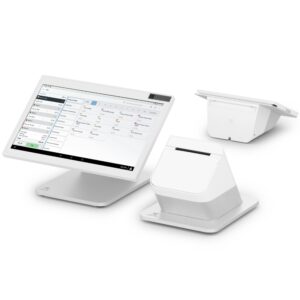Discover how a U Drill enhances CNC machining productivity with faster drilling, accurate sizing, lower costs, and improved efficiency for modern manufacturing.
How a U Drill Improves Productivity in CNC Machining
Modern manufacturing depends on speed, accuracy, and consistency, and CNC machining delivers all three. As industries shift toward high-volume and high-precision production, choosing the right cutting tools becomes a major productivity factor. One such tool widely used across machining centers is the u drill, known for reducing cycle times and improving hole-making efficiency without compromising accuracy.
Across automotive, aerospace, industrial equipment, and fabrication workshops, machinists look for solutions that deliver faster results, lower tooling expenses, and maintain excellent machining quality. That is why the u drill has gained popularity among CNC professionals who prioritize performance, cost savings, and long-term reliability.
Why CNC Machining Needs Faster Hole-Making Solutions
CNC machines are designed to maximize output per shift, and every second saved contributes to profitability. Traditional drilling tools often require multiple steps—spot drilling, pilot drilling, and finishing—which increases machining time. The u drill eliminates these extra steps by producing accurate holes in a single pass, allowing shops to complete more work with fewer tool changes.
When used correctly, machinists experience smoother workflow, reduced downtime, and improved dimensional stability. This streamlined operation makes CNC machining far more efficient, especially during mass production.
How a U Drill Boosts Productivity
One of the biggest advantages of using a u drill is its ability to accommodate high feed rates and cutting speeds. This leads to faster penetration into the material while maintaining precision. Many tools struggle under aggressive cutting conditions, but this drill design offers strong rigidity, helping prevent vibration and tool deflection.
Its through-coolant capability promotes better temperature control, ensuring stable performance even during long production cycles. For CNC operators aiming to improve their machining throughput, these efficiency gains can make a noticeable difference in daily output.
Role of Inserts in Performance and Cost Efficiency
The replaceable u drill insert plays a major role in productivity, tool life, and cutting performance. Instead of discarding or resharpening the entire drill, machinists simply replace the insert, saving both time and cost. Different insert coatings, chip breaker styles, and edge geometries are available depending on the material and machining speed.
When selecting a u drill insert, machinists evaluate factors like the hardness of the workpiece, coolant availability, and required finish quality. This flexibility results in consistent hole-making performance and increased operational efficiency.
Choosing the Right Diameter for CNC Applications
Selecting the correct drilling diameter is crucial for efficient hole-making, chip removal, and dimensional accuracy. To simplify tool selection, machinists often refer to a u drill size chart, which lists available diameters, recommended depths, and compatible inserts for different machines.
Understanding u drill size helps avoid common machining issues such as tool breakage, excessive heat, or oversized holes. By comparing requirements with a U drill size chart, machinists can confidently choose the ideal tool for specific materials and production needs. Accurate sizing ensures better performance, cleaner holes, and longer tool life, no matter the machining setup.
Whether working with aluminum, stainless steel, or cast iron, selecting the right u drill size supports smoother operations and fewer production interruptions.
Understanding Cost and Pricing Factors
Pricing affects most purchasing decisions in machining environments. A u drill price depends on factors like drill diameter, brand reputation, body material, insert grade, and coolant compatibility. Higher-end versions typically deliver longer tool life and improved cutting stability, offering better long-term value.
While comparing u drill price options, machinists should evaluate insert availability, durability, and after-sales support in addition to cost. Investing in a reliable tool often results in fewer replacements, reduced cycle times, and improved productivity—making it more cost-effective over time.
U Drills and Smart CNC Machining Practices
Increasing productivity doesn’t only depend on buying advanced tools—it also requires proper setup and maintenance. When operators apply recommended feed rates, use effective chip evacuation, and ensure correct tool holding, the u drill performs at its highest potential. Combining technical knowledge with high-quality tooling helps CNC facilities achieve consistent, accurate, and profitable results.
Final Thoughts
The u drill has become a valuable asset in modern CNC machining because it reduces tool usage, accelerates hole production, and improves dimensional accuracy. Its ability to perform multiple drilling functions in one step makes manufacturing faster, smoother, and more economically efficient. With proper selection, maintenance, and machining parameters, shops can significantly increase their productivity and competitiveness. Jaibros is a trusted supplier of precision cutting tools, offering durable, high-performance drilling solutions for workshops and industries. Their product range supports superior machining accuracy, competitive pricing, and reliable customer service—making them a preferred choice for modern manufacturing needs.
FAQs
- What makes indexable drilling suitable for CNC machining?
Indexable drilling allows faster cutting speeds, reduced cycle times, and lower tooling expenses, making it ideal for high-volume CNC production. - Are indexable drills compatible with different machine types?
Yes, they work efficiently on machining centers, turning centers, and automated CNC setups. - How do machinists choose the right drill diameter?
They review material type, required hole tolerance, and machine capacity before selecting a suitable size. - Do inserts need frequent replacement?
Insert replacement depends on feed rate, cutting material, and coolant support. With proper use, they maintain long tool life. - Can these drills handle hardened materials?
Yes, when paired with the correct insert grade, they can successfully cut a wide range of metals, including hard alloys.





